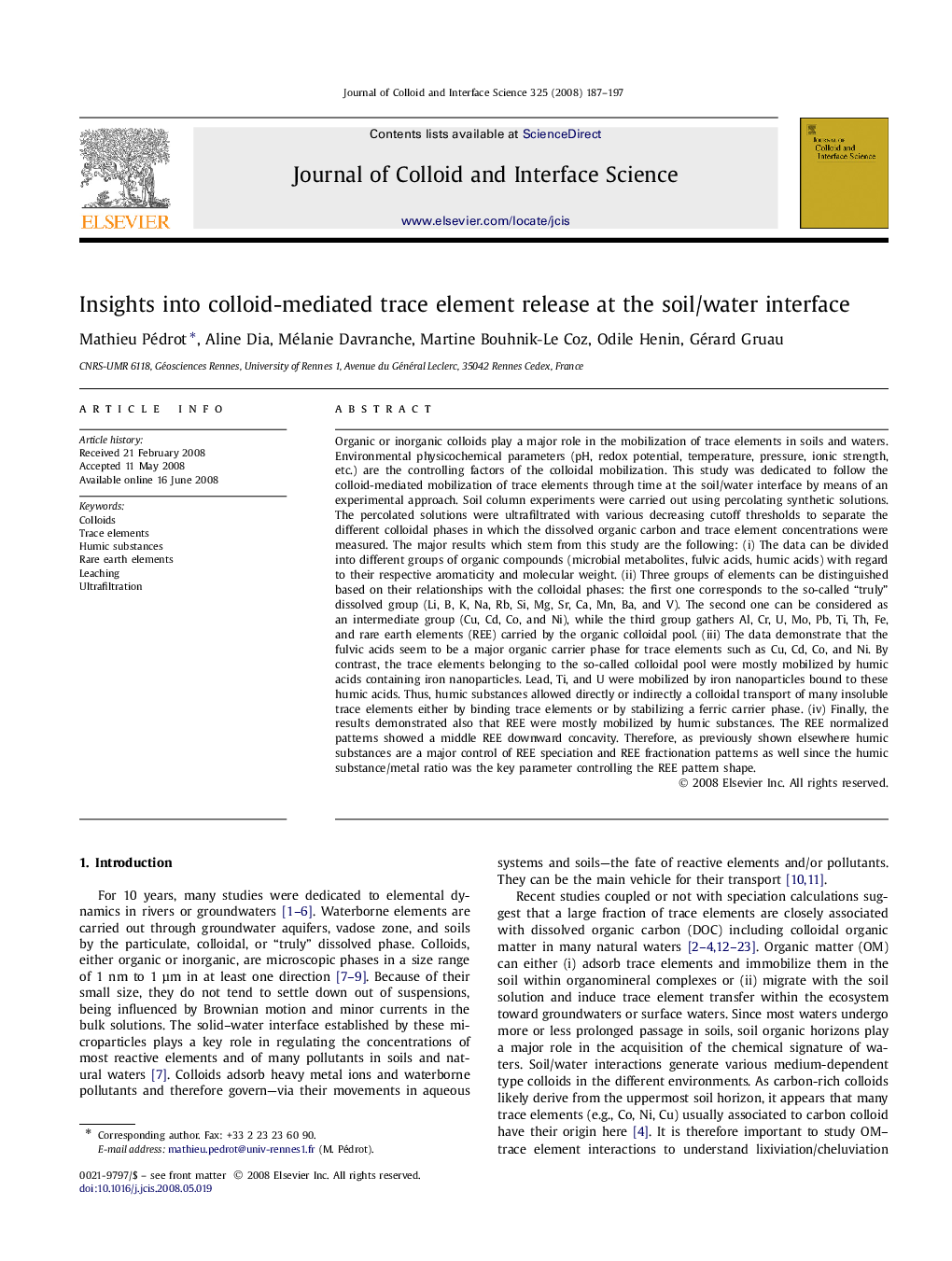| کد مقاله | کد نشریه | سال انتشار | مقاله انگلیسی | نسخه تمام متن |
|---|---|---|---|---|
| 611058 | 880665 | 2008 | 11 صفحه PDF | دانلود رایگان |

Organic or inorganic colloids play a major role in the mobilization of trace elements in soils and waters. Environmental physicochemical parameters (pH, redox potential, temperature, pressure, ionic strength, etc.) are the controlling factors of the colloidal mobilization. This study was dedicated to follow the colloid-mediated mobilization of trace elements through time at the soil/water interface by means of an experimental approach. Soil column experiments were carried out using percolating synthetic solutions. The percolated solutions were ultrafiltrated with various decreasing cutoff thresholds to separate the different colloidal phases in which the dissolved organic carbon and trace element concentrations were measured. The major results which stem from this study are the following: (i) The data can be divided into different groups of organic compounds (microbial metabolites, fulvic acids, humic acids) with regard to their respective aromaticity and molecular weight. (ii) Three groups of elements can be distinguished based on their relationships with the colloidal phases: the first one corresponds to the so-called “truly” dissolved group (Li, B, K, Na, Rb, Si, Mg, Sr, Ca, Mn, Ba, and V). The second one can be considered as an intermediate group (Cu, Cd, Co, and Ni), while the third group gathers Al, Cr, U, Mo, Pb, Ti, Th, Fe, and rare earth elements (REE) carried by the organic colloidal pool. (iii) The data demonstrate that the fulvic acids seem to be a major organic carrier phase for trace elements such as Cu, Cd, Co, and Ni. By contrast, the trace elements belonging to the so-called colloidal pool were mostly mobilized by humic acids containing iron nanoparticles. Lead, Ti, and U were mobilized by iron nanoparticles bound to these humic acids. Thus, humic substances allowed directly or indirectly a colloidal transport of many insoluble trace elements either by binding trace elements or by stabilizing a ferric carrier phase. (iv) Finally, the results demonstrated also that REE were mostly mobilized by humic substances. The REE normalized patterns showed a middle REE downward concavity. Therefore, as previously shown elsewhere humic substances are a major control of REE speciation and REE fractionation patterns as well since the humic substance/metal ratio was the key parameter controlling the REE pattern shape.
The elemental distribution in the colloidal phase higher than 2 kDa is represented at the end of the column-mediated soil leaching experiment. Three different groups can be identified.Figure optionsDownload as PowerPoint slide
Journal: Journal of Colloid and Interface Science - Volume 325, Issue 1, 1 September 2008, Pages 187–197